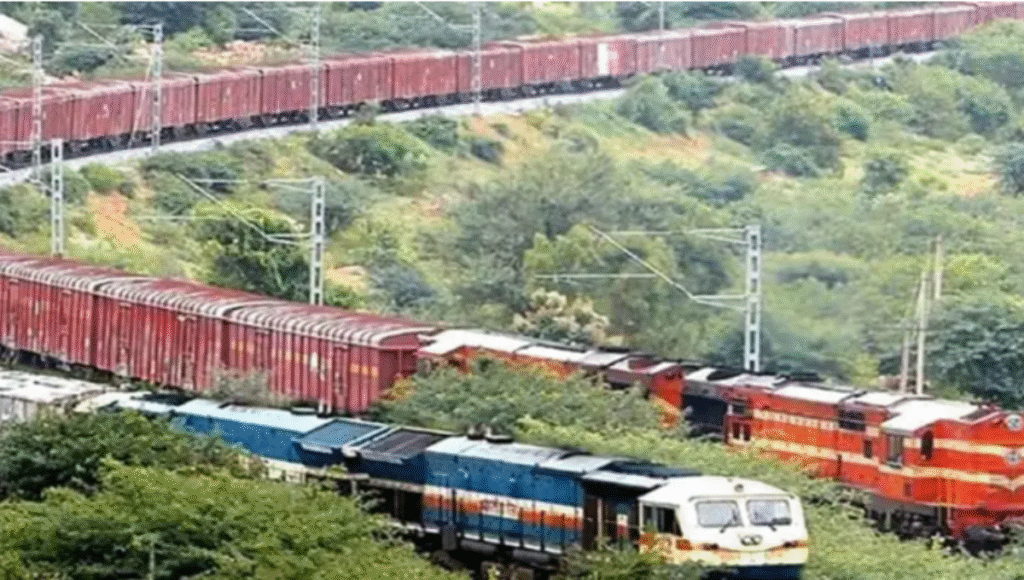
Kashmir Welcomes First Auto Freight Train Reaches Kashmir: A New Era for Logistics and Trade
For decades, transporting goods in and out of Kashmir has been a challenge, with businesses and consumers often burdened by long transit times, high costs, and logistical delays. But history was made on Friday as the first-ever automobile freight train arrived in South Kashmir, bringing with it a wave of optimism for the region’s trade and transport ecosystem.
The special train, dispatched from Maruti Suzuki India Limited’s Gati Shakti Terminal in Manesar, Haryana, successfully completed its long journey of over 850 kilometers in about 45 hours. It carried 116 newly manufactured vehicles, making it the very first direct rail-based automobile consignment to reach the Valley. For a region that has long relied on road transport from Jammu and Punjab terminals, this development is being hailed as a game-changer for businesses, logistics, and consumers alike.
A Milestone for Northern Railways and the Valley
Officials from Northern Railways confirmed that the train was unloaded smoothly at its destination in Anantnag, calling the moment a “significant leap forward in Kashmir’s freight connectivity.” This achievement does not just add another feather in the cap of Indian Railways but also marks the beginning of a more streamlined, cost-effective system for moving vehicles directly into the Valley.
Until now, cars and commercial vehicles destined for Kashmir had to travel by road from faraway railway terminals. This process meant higher fuel and transport costs, not to mention longer waiting times for businesses and customers. With the new rail link, those hurdles could soon become a thing of the past.
Relief for Businesses and Consumers
The arrival of this automobile rake holds tremendous promise for the local economy. By reducing transit times and eliminating the need for expensive road-based logistics, manufacturers and dealers will save costs, which is expected to trickle down to end consumers. In simpler terms, buying a car in Kashmir could become cheaper and more accessible.
A senior railway official noted, “This marks the Valley’s entry into a new era of streamlined and cost-effective automobile logistics.” The statement resonates deeply with local stakeholders, who have long advocated for better transport facilities to bring down costs and improve business efficiency.
Building on Recent Progress
This landmark moment is not happening in isolation. In recent years, Northern Railways has worked tirelessly to strengthen logistics and freight services in Kashmir. Just last year, more than half a million apple boxes were transported via railways to different corners of India, offering a much-needed lifeline to fruit growers in the Valley. The successful apple freight movement demonstrated how railways could revolutionize local industries, and the automobile train now builds on that momentum.
By opening up a direct rail link for automobiles, Kashmir’s economy is poised to benefit in multiple ways. Faster movement of vehicles not only helps businesses keep up with demand but also reduces road congestion and carbon emissions—a step forward for both trade and sustainability.
A Step Toward Connectivity and Growth
The arrival of the automobile freight train is more than just a logistical achievement—it is symbolic of Kashmir’s ongoing integration into India’s growing infrastructure story. Every new rail connection to the Valley is not just about faster movement of goods but about unlocking new opportunities, creating jobs, supporting businesses, and making everyday life easier for people.
For customers in the Valley, the move promises relief from inflated prices caused by heavy transport costs. For manufacturers, it is a chance to improve efficiency and strengthen their market presence in a region that is rapidly opening up to new possibilities.
Looking Ahead
As the first rake has shown the way, the future could see more regular automobile freight services into Kashmir, further cutting down costs and delays. With railways already proving its worth in the transportation of apples, vegetables, and now automobiles, the possibilities for logistics and trade are vast.
The development also highlights the importance of initiatives like the Gati Shakti Mission, which focuses on modernizing India’s logistics network for faster and more efficient growth. By connecting regions like Kashmir more directly to the national supply chain, these efforts ensure that no part of the country is left behind in progress.
Conclusion
The first-ever automobile freight train into Kashmir is more than a historic achievement—it is a turning point for the Valley’s economy and logistics. It represents hope for cheaper vehicles, faster trade, and stronger business opportunities. At the same time, it is a reminder of how investments in infrastructure can transform lives in real, tangible ways.
For the people of Kashmir, this train is not just carrying cars—it is carrying the promise of progress, affordability, and connection with the rest of the nation like never before.
Disclaimer
This article is based on publicly available information and official updates. It is intended for informational purposes only and does not represent any official policy statement.





